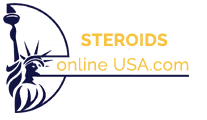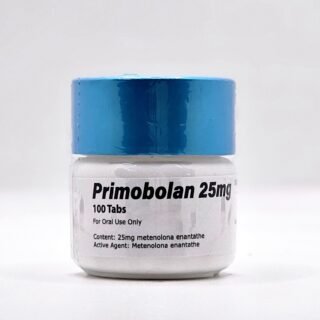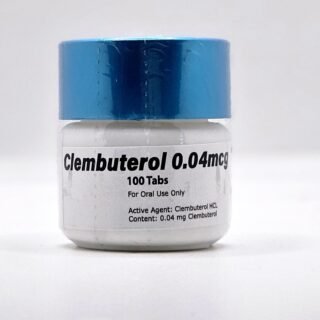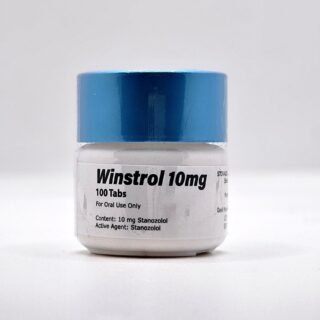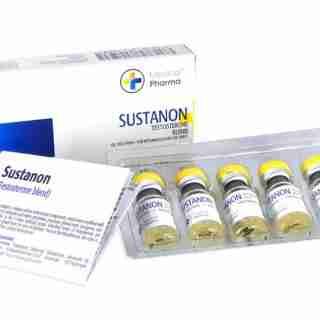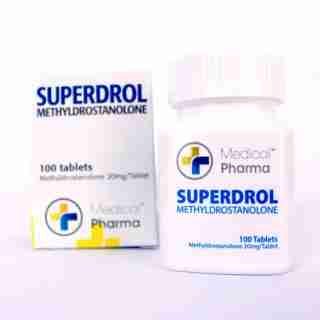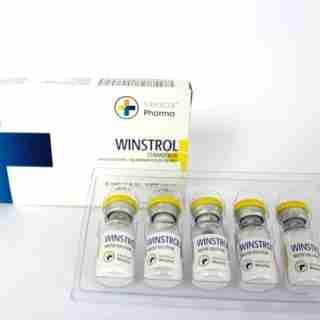Category
- Best Peptides for muscle growth
- Geno Pharma Domestic Warehouse 2 (Canada&USA) (Ships in 1–3 days) Faster!
- GP(Domestic Shipping US) Warehouse 1
- Human Pharma Premium
- Phar Labs Premium-Select
- Steroids on Sale USA, Real Steroids Online
- New arrivals in USA
- Most popular steroids in USA
- Antiestrogens / Gonadotropins
- Bangkok Steroid USA
- Biopharma Steroid USA
- British Dragon
- Anabolic Steroids for Horses
- Fat-burners
- Gen Pharma USA
- Medical Pharma Steroid USA
- Medical Tech Steroid USA
- Novocrine Steroids
- HGH USA
- Omega Labs Steroid USA
- Rotterdam Steroids USA
- SARMs USA
- Sciroxx
- Sydgroup Steroid USA
- Big vetenary Steroid USA
- Watson Steroids
- XT Labs Steroids
Most Popular steroids USA
-
 Primobolan Pills 25mg 100 pills Domestic USA
Primobolan Pills 25mg 100 pills Domestic USA
$99.00Original price was: $99.00.$85.00Current price is: $85.00. -
 Clenbuterol for Sale 40mcg 100 Tabs - GP Premium Domestic USA
Clenbuterol for Sale 40mcg 100 Tabs - GP Premium Domestic USA
$99.00Original price was: $99.00.$65.00Current price is: $65.00. -
 Winstrol Tablets for Sale 10mg 100 pills GP Domestic
Winstrol Tablets for Sale 10mg 100 pills GP Domestic
$99.00Original price was: $99.00.$75.00Current price is: $75.00.

Anadrol (Oxymetholone) 100mg/tab 100 tabs – Medical Pharma
$93.00
CI-406; HMD; Oksimetolon; Oksimetoloni; Oximetolon; Oximetolona; Oxymétholone; Oxymetholonum. 17β-Hydroxy-2-hydroxymethylene-17α-methyl-5α-androstan-3-one.
Share this page:
- Click to share on X (Opens in new window) X
- Click to share on Facebook (Opens in new window) Facebook
- Click to email a link to a friend (Opens in new window) Email
- Click to share on LinkedIn (Opens in new window) LinkedIn
- Click to share on Reddit (Opens in new window) Reddit
- Click to share on Pinterest (Opens in new window) Pinterest
- Click to share on Telegram (Opens in new window) Telegram
- Click to share on WhatsApp (Opens in new window) WhatsApp
- Click to share on Tumblr (Opens in new window) Tumblr
Anadrol (Oxymetholone) 100mg/tab 100 tabs – Medical Pharma Steroids USA
C21H32O3 = 332.5.
CAS — 434-07-1.
ATC — A14AA05.
ATC Vet — QA14AA05.
Pharmacopoeias. In Br., Jpn,and US. BP 2008(Oxymetholone). A white to creamy-white, odourless or almost odourless, crystalline powder.
It exhibits polymorphism. Practically insoluble in water; soluble in alcohol; freely soluble in chloroform; slightly soluble in ether. Protect from light. Avoid contact with ferrous metals.
USP 31(Oxymetholone). A white to creamy-white, odourless crystalline powder. Practically insoluble in water; soluble 1 in 40 of alcohol, 1 in 5 of chloroform, 1 in 82 of ether, and 1 in 14 of dioxan.
Pharmacologic category
Anabolic Steroid.
Dosing: adult
Note: The National Kidney Foundation does not recommend the use of androgens as an adjuvant to ESA treatment in anemic patients with chronic kidney disease (KDOQI, 2006).
Erythropoietic effects: Oral: 1-5 mg/kg/day once daily; usual effective dose: 1-2 mg/kg/day; give for a minimum trial of 3-6 months because response may be delayed.
Dosing: Geriatric
Refer to adult dosing.
Dosing: Pediatric
Refer to adult dosing.
Dosing: Renal impairment
No dosage adjustment provided in manufacturer’s labeling. Use with caution due to risk of edema in patients with renal impairment.
Dosing: Hepatic impairment
Mild to moderate impairment: There are no dosage adjustments provided in the manufacturer’s labeling.
Severe impairment: Use is contraindicated.
Use: Labeled indications
Treatment of anemias caused by deficient red cell production.
Clinical practice guidelines
Storage/Stability
Store at room temperature 20° to 25°C (68° to 77°F); excursions permitted to 15°C to 30°C (59°F to 86°F). Protect from light.
Medication patient education with HCAHPS considerations
• Patient may experience diarrhea, insomnia, or sexual dysfunction. Have patient report immediately to prescriber priapism, acne vulgaris, dyspnea, excessive weight gain, edema of extremities, urinary retention, oliguria, asthenia, ecchymosis, hemorrhaging, considerable anxiety, signs of hepatic impairment, or signs of virilization (HCAHPS).
Contraindications
Hypersensitivity to oxymetholone or any component of the formulation; breast cancer in men; breast cancer in women with hypercalcemia; prostate cancer; severe hepatic dysfunction; nephrosis or nephrotic phase of nephritis; pregnancy or use in women who may become pregnant.
Warnings/Precautions
Concerns related to adverse effects:
• Blood lipid changes: [U.S. Boxed Warning]: Anabolic steroids may cause changes in blood lipids (decreased high density lipoproteins and sometimes increased low density lipoproteins), increasing the risk of arteriosclerosis and coronary artery disease.
• Clotting factor alterations: Anabolic steroids may suppress factors II, V, VII, and X; prothrombin time may be increased.
• Hepatic effects: [U.S. Boxed Warning]: Androgenic anabolic steroid treatment may cause peliosis hepatis, which occurs when splenic or hepatic tissue is replaced by cysts (blood-filled); may only cause minimal hepatic dysfunction although has been associated with hepatic failure. Androgenic liver cell tumors, which may be benign, although malignant tumors have also been reported; generally regress when anabolic steroid treatment is withdrawn.
Both conditions (peliosis and tumors) may not be apparent until liver failure or intra-abdominal hemorrhage develops. Androgen use (low doses) has also been associated with cholestatic hepatitis and jaundice; may be associated with hepatomegaly and right upper-quadrant pain; jaundice is typically reversible upon discontinuation (continuing treatment has been associated with coma and death). Monitor liver function periodically.
• Prostate conditions: Androgenic anabolic steroid use may cause prostatic hypertrophy or prostate cancer in elderly men.
Disease related concerns:
• Breast cancer: May cause hypercalcemia in women with breast cancer by stimulating osteolysis.
• Diabetes: Use with caution in patients with diabetes mellitus; insulin or oral hypoglycemic needs may be altered; monitor carefully.
• Edematous conditions: Use with caution in patients with conditions influenced by edema (eg, cardiovascular disease, migraine, seizure disorder, renal impairment); may cause fluid retention.
Special populations:
• Pediatric: May accelerate bone maturation without producing compensatory gain in linear growth in children; effect may continue for 6 months after treatment discontinuation; in prepubertal children perform radiographic examination of the hand and wrist every 6 months to determine the rate of bone maturation and to assess the effect of treatment on the epiphyseal centers.
• Women: Discontinue with evidence of mild virilization in women.
Other warnings/precautions:
• Appropriate use: Oxymetholone should not replace other anemia treatment supportive measures such as transfusion, correction of iron, folic acid, vitamin B12 or pyridoxine deficiency, antibacterial therapy, and the appropriate use of corticosteroids.
Geriatric Considerations
Theoretically, androgens may increase the risk of prostatic hyperplasia.
Pregnancy risk factor
X
Category X: Studies in animals or human beings have demonstrated fetal abnormalities, or there is evidence of fetal risk based on human experience, or both, and the risk of the use of the drug in pregnant women clearly outweighs any possible benefit. The drug is contraindicated in women who are or may become pregnant.
Pregnancy considerations
Oligospermia or amenorrhea may occur resulting in an impairment of fertility. Use is contraindicated in women who are or may become pregnant.
Lactation
Excretion in breast milk unknown/not recommended
Breast feeding considerations
It is not known if oxymetholone is excreted in breast milk. Breast-feeding is not recommended by the manufacturer.
Adverse reactions
Frequency not defined.
Cardiovascular: Coronary artery disease, peripheral edema
Central nervous system: Chills, excitation, insomnia
Dermatologic: Acne, hirsutism (women), hyperpigmentation, male-pattern baldness (postpubertal males, women)
Endocrine & metabolic: Amenorrhea, clitoromegaly, glucose tolerance decreased, gynecomastia, HDL-cholesterol decreased, hypercalcemia, hyperchloremia, hyperkalemia, hypernatremia, hyperphosphatemia, LDL-cholesterol increased, libido increased/decreased, menstrual irregularities, virilism (women).
Gastrointestinal: Diarrhea, nausea, vomiting.
Genitourinary: Bladder irritability, epididymitis, impotence, oligospermia, penile enlargement, penile erections increased (prepubertal males), priapism, prostate cancer, prostatic hyperplasia (elderly males), seminal volume decreased, testicular atrophy, testicular dysfunction.
Hematologic: Bleeding, INR increased, iron-deficiency anemia, leukemia, prothrombin time increased, clotting factors (II, V, VII, X) suppressed.
Hepatic: Alkaline phosphatase increased, bilirubin increased, cholestatic hepatitis, cholestatic jaundice, hepatic failure, hepatic necrosis, hepatocellular carcinoma, liver cell tumors, peliosis hepatis, transaminases increased.
Neuromuscular & skeletal: Creatine phosphokinase increased, premature closure of epiphysis (children).
Renal: Creatinine increased.
Respiratory: Hoarseness (women).
Miscellaneous: Voice deepening (women).
Postmarketing and/or case reports:
Hepatotoxicity (idiosyncratic) (Chalasani, 2014).
Metabolism/Transport effects
None known.
Drug interactions
Blood Glucose Lowering Agents: Androgens may enhance the hypoglycemic effect of Blood Glucose Lowering Agents. Risk C: Monitor therapy.
C1 inhibitors: Androgens may enhance the thrombogenic effect of C1 inhibitors. Risk C: Monitor therapy.
Corticosteroids (Systemic): May enhance the fluid-retaining effect of Androgens. Risk C: Monitor therapy.
Cyclosporine (Systemic): Androgens may enhance the hepatotoxic effect of Cyclosporine (Systemic). Androgens may increase the serum concentration of Cyclosproine (Systemic). Risk D: Consider therapy modification.
Vitamin K Antagonists (eg, warfarin): Androgens may enhance the anticoagulant effect of Vitamin K Antagonists. Risk D: Consider therapy modification.
Test interactions
Decreased thyroxine-binding globulin, T4; increased resin uptake of T3 and T4.
Monitoring Parameters
Periodic liver function tests, lipid profile, hemoglobin and hematocrit; iron studies; serum glucose (may be decreased by testosterone, monitor patients with diabetes); radiologic examination of bones every 6 months (when using in prepubertal children); monitor urine and serum calcium and signs of virilization in women treated for breast cancer
Dosage forms
Excipient information presented when available (limited, particularly for generics); consult specific product labeling.
Tablet, Oral: 50 mg [scored].
Anatomic Therapeutic Chemical (ATC) Classification
⦁ A14AA05
Mechanism of action
Enhances production of erythropoietin in patients with anemias which are due to bone marrow failure; stimulates erythropoiesis in anemias due to deficient red cell production.
Local anesthetic/Vasoconstrictor precautions
No information available to require special precautions.
Effects on dental treatment
No significant effects or complications reported.
Effects on bleeding
No information available to require special precautions.
Buy anabolis steroids online USA.
Related products
Sustanon 250mg/ml 10ml – Medical Pharma in USA
$95.00Add to cartSustanon contains a mixture of four testosterone compounds, which were modified with the addition of carboxylic acid esters (propionic, propionic phenyl ester, isocaproic, and decanoic acids) at the 17-beta hydroxyl group.
Esterified forms of Testosterone are absorbed more slowly from the area of injection. Once in the bloodstream, the ester is removed to yield free (active) Testosterone.
Superdrol (Methasterone) 20mg tab 100 tabs
$93.00Add to cartMethasterone; Superdrol; Methasteron; UNII-GH88DY98MR; 2alpha,17alpha-Dimethyldihydrotestosterone; NSC 40490.
Winstrol (Stanozolol) 100mg/ml 10 ml Medical Pharma
$93.00Add to cartAndrostanazol; Androstanazole; Estanazol; Estanozolol; Methylstanazole; Metistanazol; NSC-43193; Stanotsololi; Stanozololis; Stanozololum; Stanozolum; Sztanozolol; Win-14833. 17α-Methyl-2′H-5α-androst-2-eno[3,2-c]pyrazol-17β-ol.
Dynabol Buy Online in USA 100mg/ml 10 ml Medical Pharma
$93.00Add to cartMetandienone (pINN); Metandienon; Metandienona; Métandiénone; Metandienoni; Metandienonum; Methandrostenolone; NSC-42722. 17β-Hydroxy-17α-methylandrosta-1,4 dien-3-one. Метандиенон.
C20H28O2 = 300.4.
CAS — 72-63-9.
ATC — A14AA03; D11AE01.
ATC Vet — QA14AA03; QD11AE01.
NOTE. The following terms have been used as ‘street names’ or slang names for various forms of Methandienone: Iron Brew.
Pharmacopoeias. In Pol
Pay with WISE APP or Remitly
Pay with WISE App or Remitly
Fast money transfers from USA for fast delivery of steroids
Secure delivery in USA
100% reliable shipping in USA
24x7 Support
Online 24 hours
Low cost delivery
Great shipping prices in USA
BULK ORDER DISCOUNT
If you are a reseller in the USA you can get a special DISCOUNT, we can give you up to 50% or more on bulk orders. If you want to make a bulk order, we can negociate for orders of over USD$4,000, contact us by email.
Steroids info



